The Best Upper-Back Exercises
The best exercises and workouts to help you build a strong, broad upper back
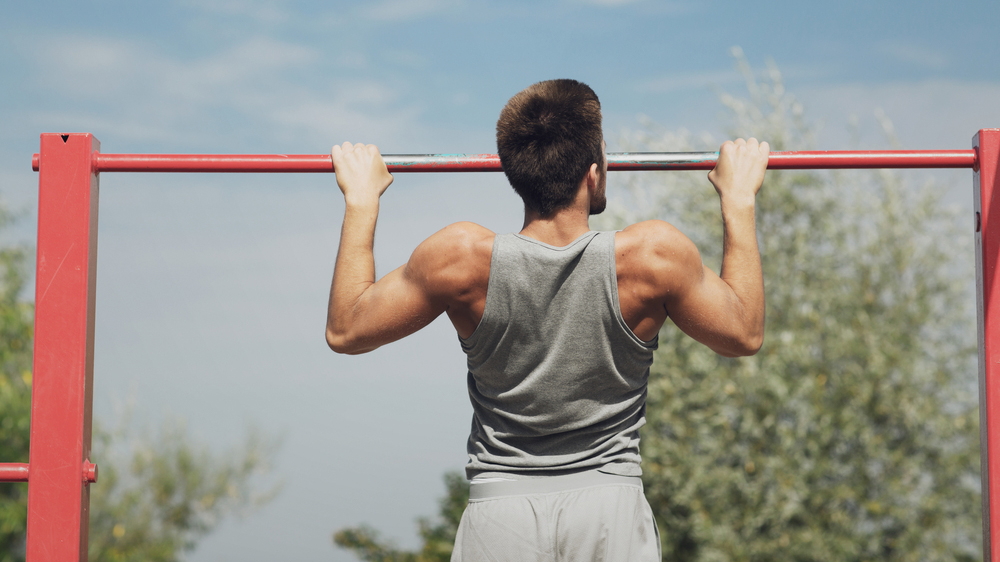
The list of benefits associated with a strong upper back is long and impressive. Upper-back exercises will help improve your posture – critical in a nation of slouchers who spend so much time hunched over a desk or phone – as well as broadening your back and increasing your strength and power, which will boost your performance in the gym and when playing various sports.
Below you’ll find seven excellent upper-back moves you can add to your gym routine, plus two of the best upper-back workouts that combine several great exercises. The two workouts are short and each can be added to a longer gym session that also targets other areas of the body, but if you are planning on doing both, give yourself two to three days in between to let the back recover.
To balance this focus on your upper back, either rotate in these lower-back workouts or, depending on the equipment you have available, tackle the whole back in one session with this gym-based back workout, back workout with dumbbells or back workout at home. If multiple sets of pull-ups are beyond you right now, build your strength using this beginner back workout and pull-up workout plan.
Upper-Back Exercises
Bent-over row

Many people get into the habit of letting the bench press dominate their workout, but concentrating on your pecs at the expense of your back can lead to a muscle imbalance that not only looks rubbish, but also increases your risk of injury. The bent-over row works the opposite muscle group, the upper back (traps, lats, rhomboids and rear deltoids), as well as your biceps and abs, which help keep your torso stable.
Start with your core braced, your back straight and your shoulder blades retracted. Bend your knees slightly and lean forwards from the hips. Grip the bar with your hands just wider than shoulder-width apart, letting the bar hang at knee level. Pull the bar to your sternum, retracting your shoulder blades to allow the bar to come up to your chest, then lower slowly back to the start.
Don’t shrug your shoulders and round your back if you’re struggling with the weight – this takes the emphasis away from the target muscles. It’s far better to switch to a lighter weight and maintain correct form.
Shrug
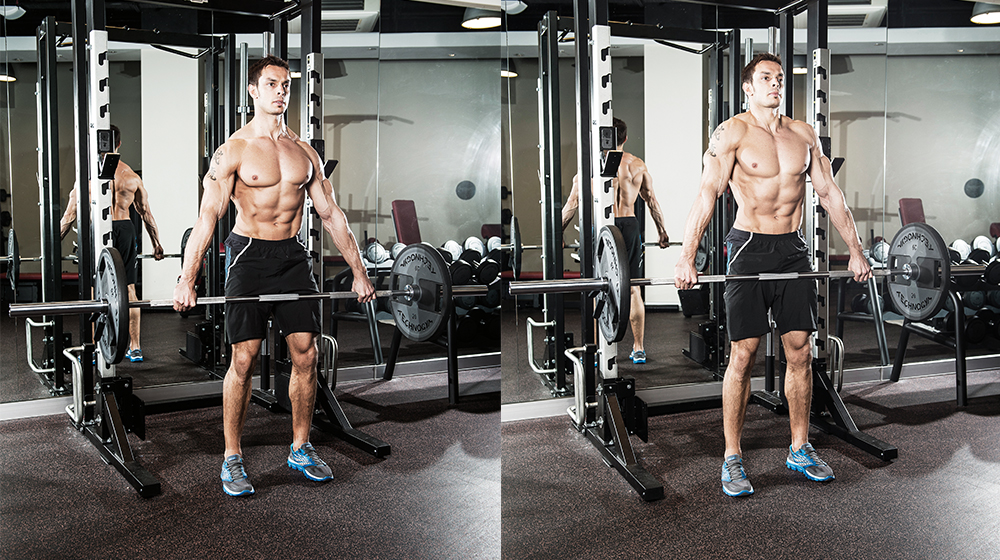
Shrugs have a limited range of motion compared with many other lifts, which means that you can go really heavy on the weights to help build big and strong traps, and develop wide shoulders.
Sign up for workout ideas, training advice, reviews of the latest gear and more.
Stand holding a heavy dumbbell in each hand with a neutral grip (palms facing), keeping your core braced and a natural arch in your back. Shrug your shoulders up towards your ears, keeping your arms straight. Hold for a second at the top position, then slowly lower the weights back to the start. You can also perform shrugs with a heavy barbell using an overhand grip just outside your hips.
One-arm row
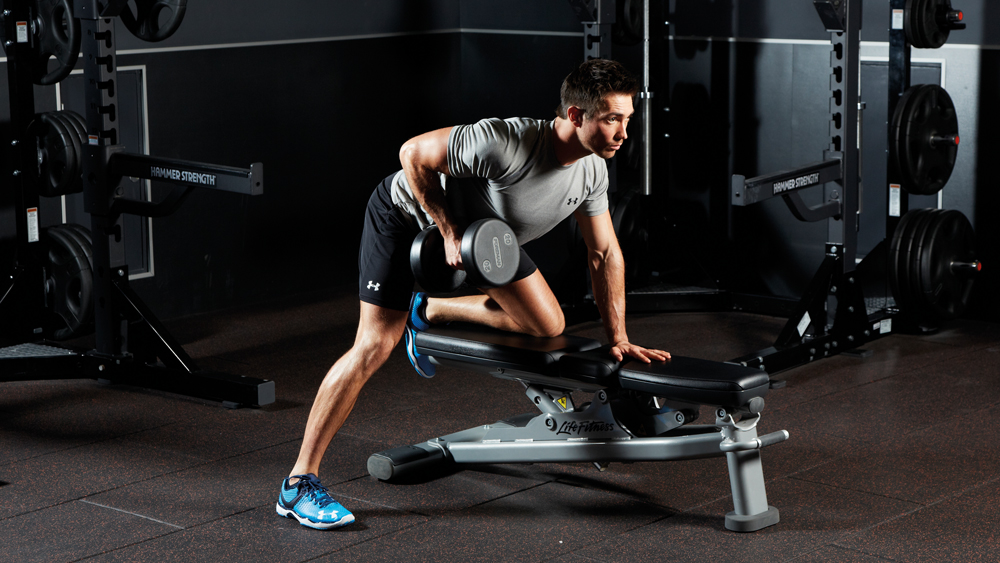
Working one arm at a time encourages balanced growth, lessening the risk of injury. Rest your left knee and hand on a bench, and hold a dumbbell in your right hand close to the floor. Keeping your back straight, use your back muscles and biceps to row the weight up to your side, leading with your elbow. Normally you’ll complete all your reps with one arm, then repeat on the other side.
Seated cable row
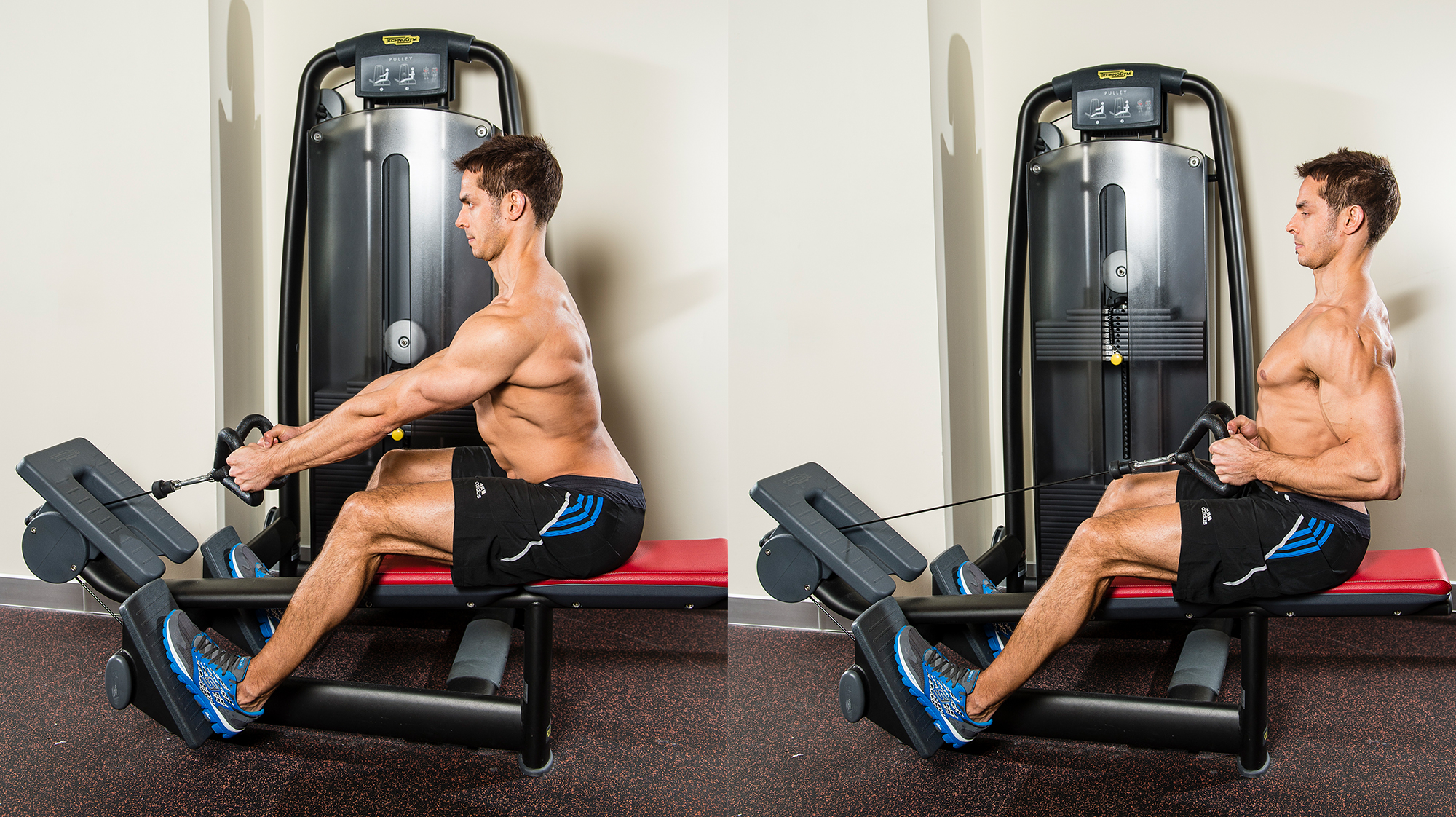
Hitting your back muscles while seated allows you to go heavier and focus all your efforts on the target muscle groups, resulting in big muscle-mass gains. Sit with a flat back and a slight bend in your knees, using a neutral grip to hold a double-D handle attached to the bottom pulley of a cable machine. Ensure that there is tension in the cable before you begin. Pull the handle to your sternum, keeping upper-body movement to a minimum, and squeeze your shoulders together. Return slowly to the start.
Pull-up

The best bodyweight upper-back exercise going, the pull-up works the lats, traps and rhomboids, as well as challenging your arms and shoulders. It’s a daunting exercise the first time you do it, and you might only manage a couple if you don’t use a resistance band or pull-up machine to support some of your weight, but stick at it and you’ll find that it won’t take long before you can knock out a set of ten pull-ups. You can also use this four-week training plan to build the strength in a more deliberate way.
Jump up and grab the bar in an overhand grip with your hands shoulder-width apart. Let your body hang so your arms are fully extended. Keeping your shoulders back and your core engaged, raise your body until your chin is above the bar. Then slowly lower yourself back to the start.
Reverse flye
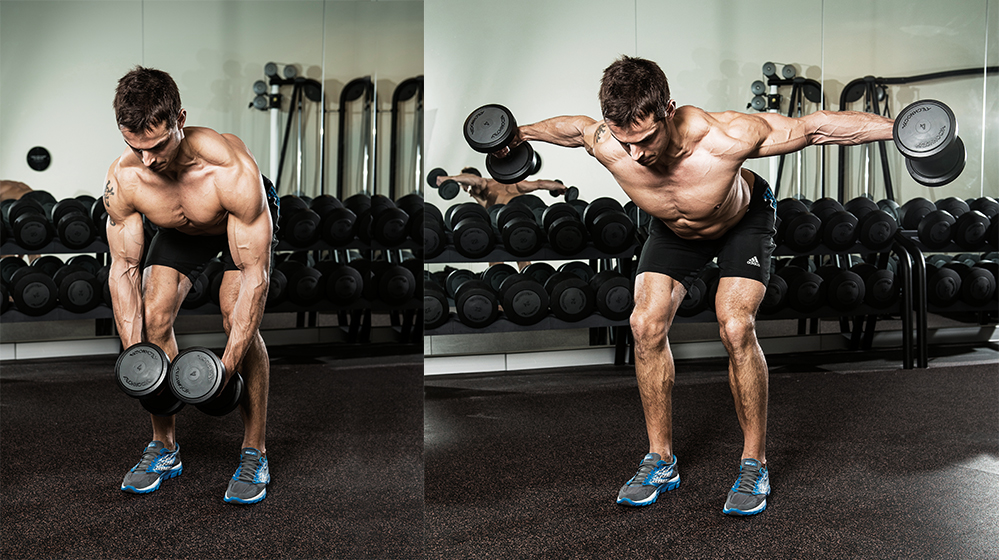
This dumbbell move is one of the best exercises for working the side and rear shoulder muscles, and it will also strengthen the shoulder girdle and rotator cuff muscles. These are worth targeting when building your upper back because they can be easy to injure when performing shoulder exercises. The flye will also work wonders for your posture, but to gain these benefits you need to perform the move with perfect form.
Stand holding a dumbbell in each hand with your palms facing. Hinge forwards from your hips, keeping your back straight and letting the weights hang down with a slight bend in your elbows. Maintain that bend as you raise the weights out to the sides until they are level with your shoulders. Pause at the top and squeeze your shoulder blades together, then lower the weights.
Renegade row
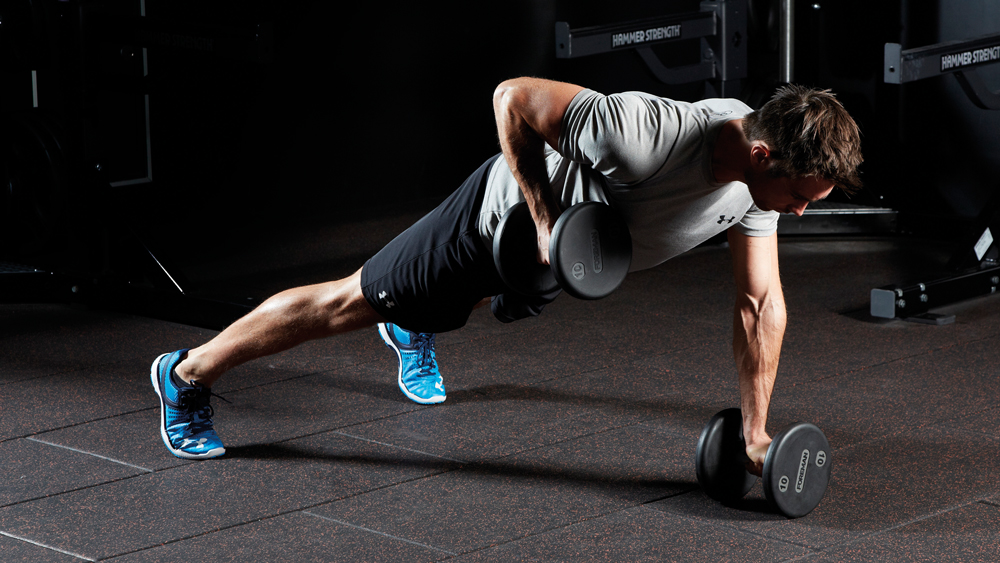
Add some core work to your quest for a stronger upper back with this combination of a plank and a row. Hexagonal dumbbells are ideal for the renegade row, because the starting position involves adopting a high plank position holding dumbbells resting on the floor. Make sure you form a straight line from your neck to your ankles and don’t let your hips sag, buck or rotate as you lift one weight to your shoulder, supporting yourself on the other arm. Lower the weight back to the floor and then row the other dumbbell up.
Upper-Back Workout 1
1 Dumbbell Romanian deadlift
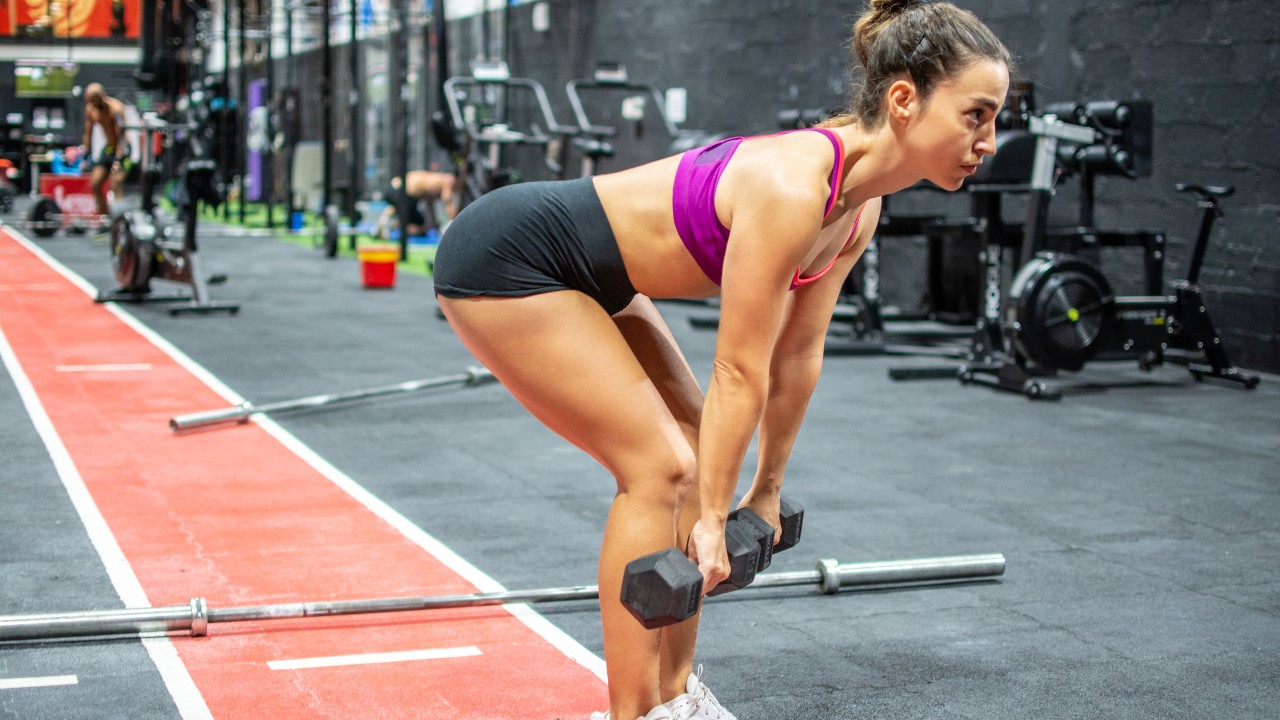
Sets 4 Reps 8
Stand with feet shoulder-width apart and knees slightly bent. Hold dumbbells by your thighs. Keeping your back straight, bend forward at the hips and allow the weights to slide down your shins. Bend your knees slightly as you lower.
Why If you keep good form with shoulder blades retracted, stand up fully at the top of the movement and contract your back, this is a huge compound move that hits the trapezius and central upper back muscles.
2 Wide grip pull-up
Sets 3 Reps up to 10
Hold an overhead bar with your hands twice shoulder-width apart and palms facing forwards. Let your body hang straight down, then squeeze your shoulder blades together and pull your chest up towards the bar. Lower yourself all the way down before repeating. Do as many reps as you can up to ten.
Why This is a tough exercise that can humble regular gym-goers because the wide grip places a massive emphasis on your underworked upper back muscles. But stick with it and you’ll soon build enough new back muscle strength to do the ten full reps.
3 Standing unilateral low-cable row
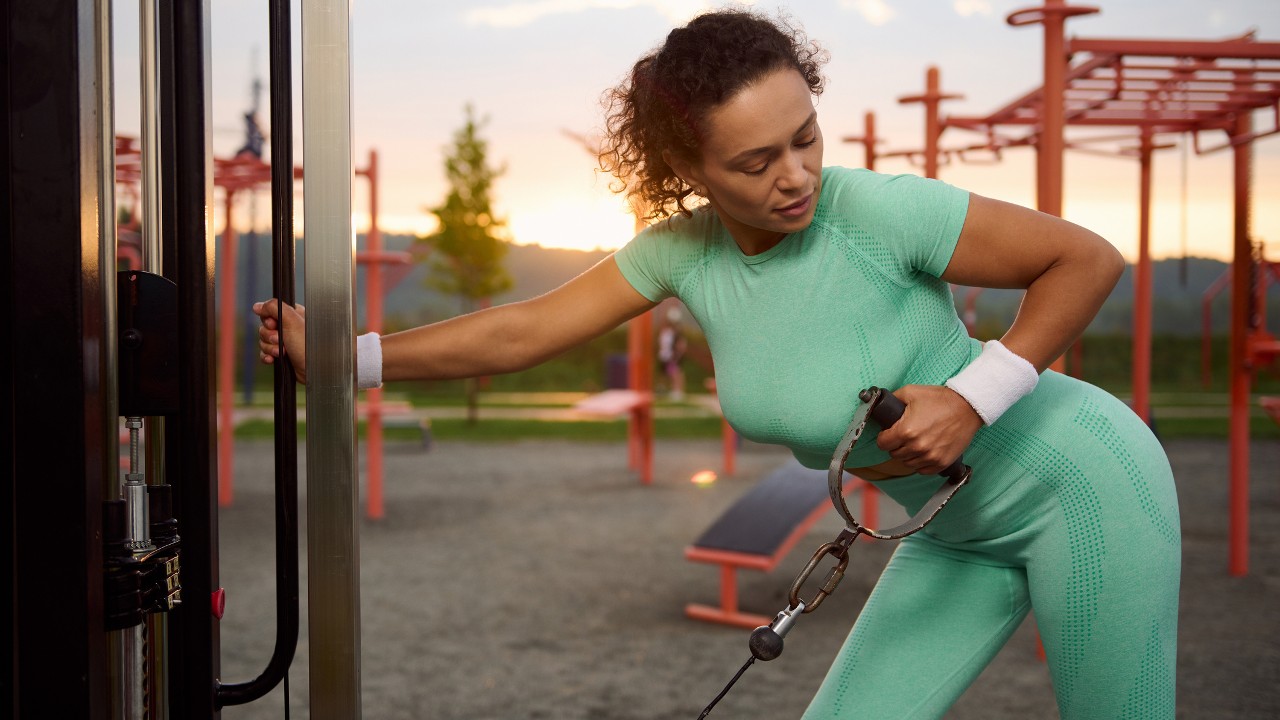
Sets 3 Reps 6 each side
Stand at a cable stack with the pulley set to a low position and hold the handle with your palm facing inwards. Start with one leg slightly ahead of the other, bending your knees. Keep your torso square-on to the stack and then pull the handle in a straight line. Your hand should end up by your abs.
Why Not only will this exercise iron out any strength imbalances in the sides of your back, but your core will also have to counteract the effort on the non-working side. This will improve rotational stability in your upper spine.
Upper-Back Workout 2
1 Close-grip seated row
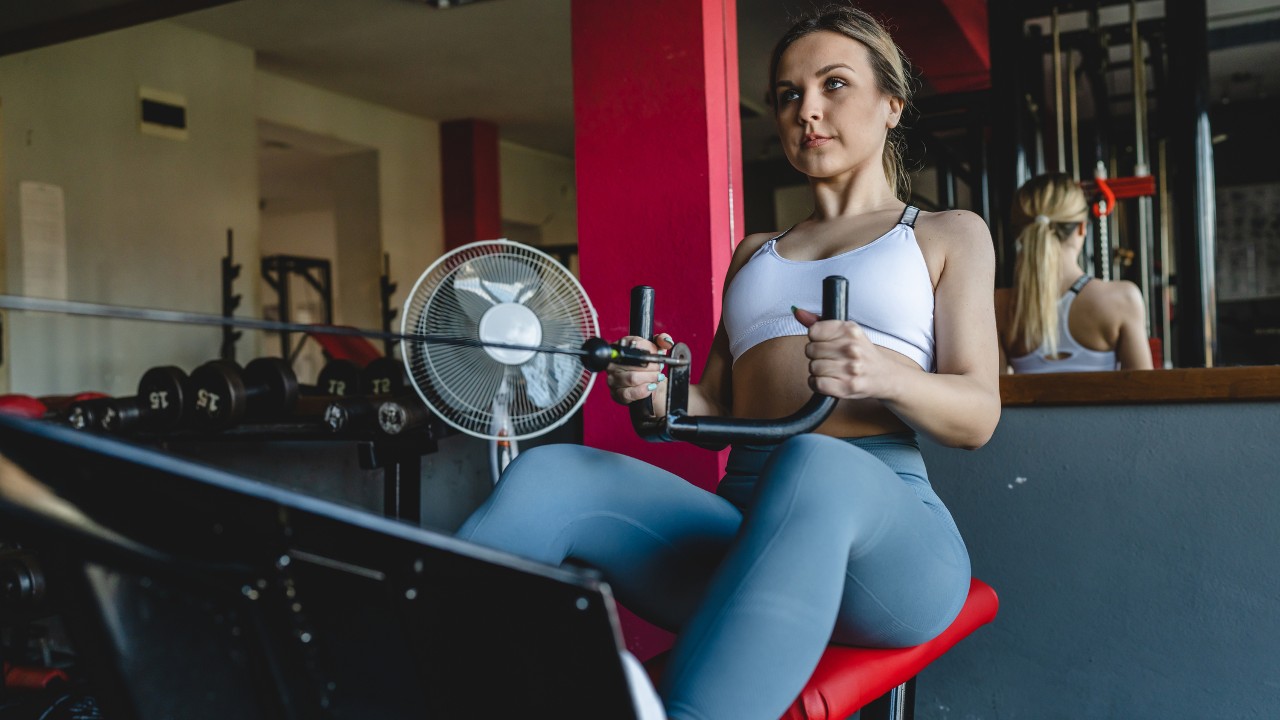
Sets 4 Reps 8
Sit at a seated row cable machine and select a weight that you can do 10 reps with. Begin with knees bent, torso upright and shoulders back. Hold the double D-handles with straight arms in front of your upper abdomen. Brace your core, then pull the handle in to your upper abdomen without moving your torso.
Why Pulling a weight towards you on a horizontal plane is the most direct way to fire up all the large upper-back muscles. Doing it sitting down takes the lower back out of the equation. Go slow and steady and not too heavy at first – you can increase the weight once you perfect the form.
2 Upright row
Sets 3 Reps 8
Stand with your feet shoulder-width apart, holding a barbell by your hips with palms facing inwards and hands in a close grip. Squeeze your shoulder blades together, brace your core and pull the bar directly upwards, taking care not to roll your shoulders forwards.
Why This exercise targets the traps in the reverse movement to the pull-up to balance the muscle strength along the opposite plane of motion. It also recruits the front and mid-shoulder muscles, allowing you to move more weight and increase growth potential.
3 Unilateral hammer-grip pull-down
Sets 3 Reps 6 each side
Hold a D-handle with a neutral grip, palm facing down. Lean back slightly, locking your shoulders and lower back into position. Brace your core and pull the handle straight down to the side of your ribcage. Pause, then lower the weight under control and repeat six times before switching sides.
Why Isolating the upper lats on each side of the back will balance out your weaker side and allow you to focus your dwindling energy at the end of the workout. The different grip will hit the muscle from a new angle, forcing it to adapt to the training stimulus.
Back stretch
This will ensure your lifts are not thrown off-balance. Kneel in front of a Swiss ball and place your right hand on top of the ball. Then lean forward, bending at the hips, until you feel the stretch in your lats beneath your armpits. Hold the position for 10 to 20 seconds unless you are about to exercise, in which case hold for three to five seconds. Then repeat the stretch with your left arm. Alternate, doing five stretches on each side.

Nick Harris-Fry is a journalist who has been covering health and fitness since 2015. Nick is an avid runner, covering 70-110km a week, which gives him ample opportunity to test a wide range of running shoes and running gear. He is also the chief tester for fitness trackers and running watches, treadmills and exercise bikes, and workout headphones.
- Sam RiderContributor
